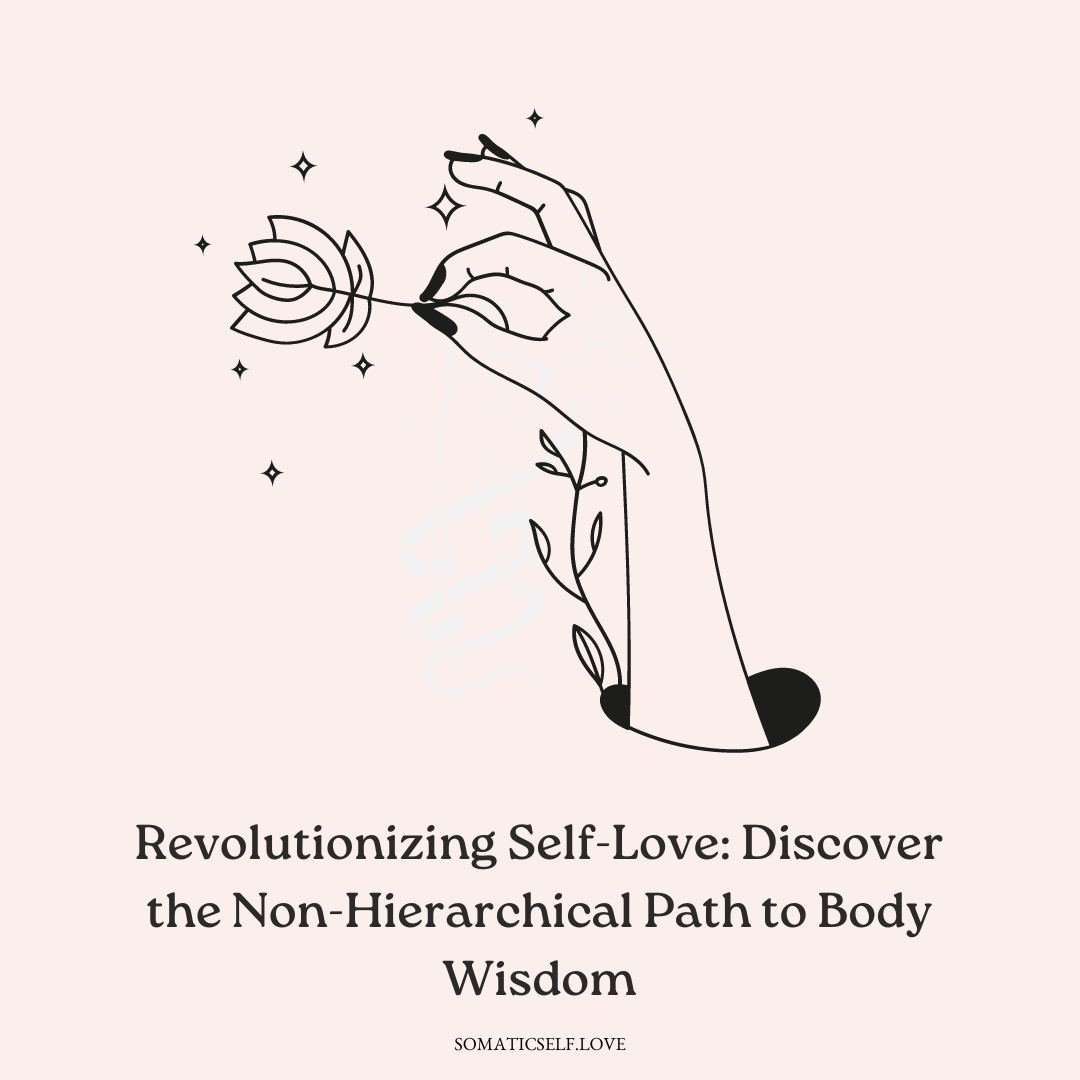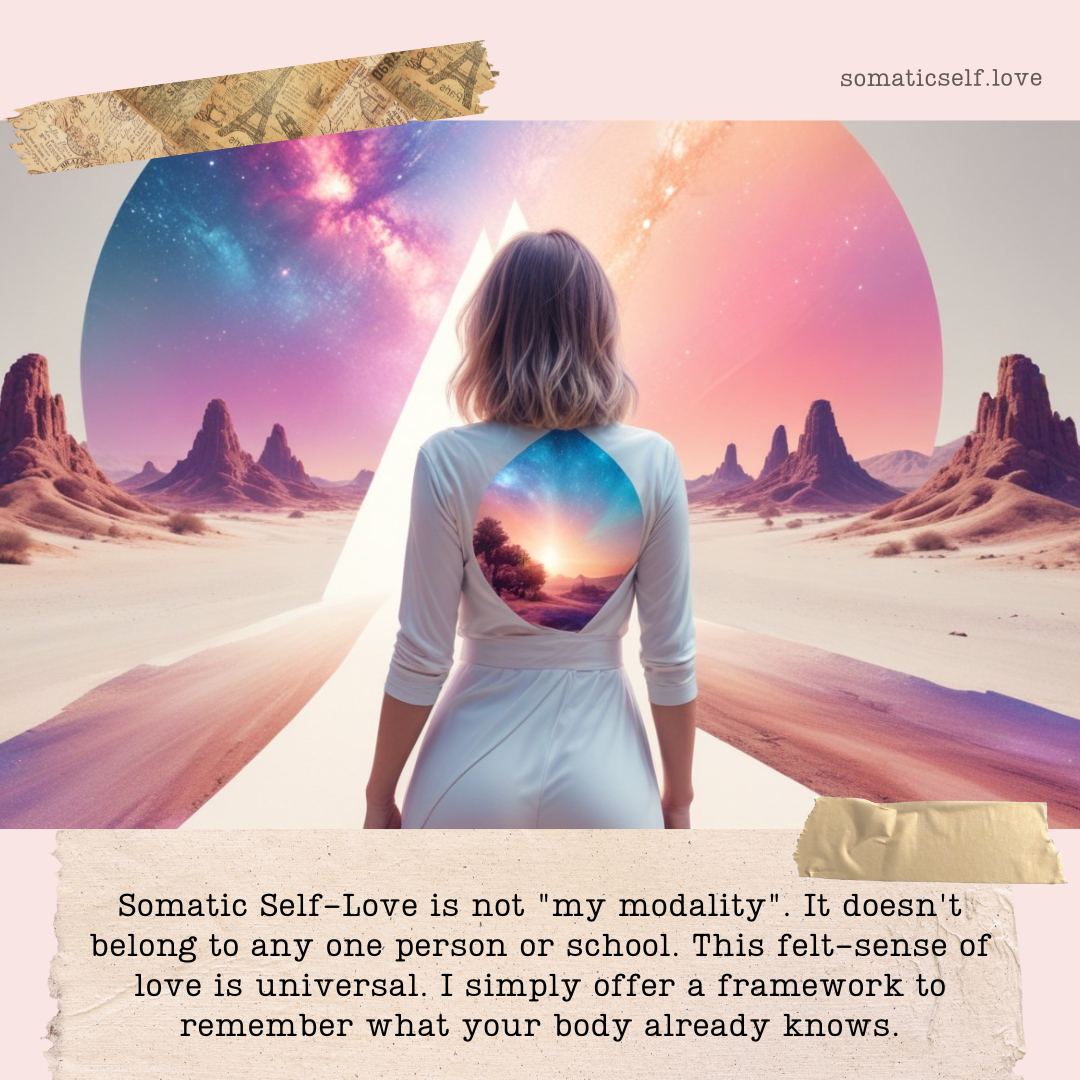Revolutionizing Self-Love: Discover the Non-Hierarchical Path to Body Wisdom

Society has long celebrated rational thinking as the pinnacle of intellectual achievement, often at the expense of the deep, intuitive knowledge embedded in our physical and emotional experiences. This cultural bias is not merely a philosophical stance; it manifests in everyday behaviors and societal norms that prioritize constant activity and intellectual abilities over bodily wisdom.
The Cost of Constant Vigilance
If you find yourself constantly in a state of high alert, always on the go and thinking, it’s important to realize that this isn’t just a personal tendency but a reflection of broader cultural values. This intense focus on doing rather than being can lead to a neglect of the softer, more receptive side of ourselves, resulting in a feeling of disconnect from the flow and rhythm of our bodies.
If this resonates with you, you’re certainly not alone. This pattern is deeply rooted in our cultural fabric. This orientation arises because our society:
- Prefers linear and predictable paths over cyclic and spontaneous ones
- Often values thinking over feeling
- Puts the intellect above the heart
- Prioritizes logic over intuition
- Favors rationality over mystical
Creating a hierarchy that places the intellect at the top. When we internalize this hierarchy, we end up channeling most of our energy into our heads.
The Hierarchical Trap of Intellectual Dominance
In capitalist societies, this intellectual focus aligns with a top-down power structure where those at the top control resources and set the rules, often maintaining their power by encouraging a culture of competitiveness and productivity. To survive in this system, we often suppress both individual and collective awareness of our bodily insights and self-love, as the system rewards output over personal and community well-being.
As more people begin to recognize and value their bodily wisdom—acting from a place of self-love and mutual respect—we fundamentally challenge these top-down dynamics. By prioritizing our physical and emotional insights, we create a society that values intuition, co-creation, and empowerment over control and oppression.

Somatic Self-Love: Reclaiming Our Body’s Language
Somatic Self-Love pulls our energy back down from our busy minds and into our bodies. It offers us a chance to reconnect with our body’s own language, which is primarily expressed through sensations. Through this practice, we learn to tune in to the rich tapestry of feelings and sensations bubbling beneath our skin, helping us to re-inhabit our physical selves fully.
This approach isn’t just another method or technique owned by a particular tradition or guru; it is a universal pathway to experiencing love deeply embedded within our very being.
What is Somatic Self-Love?
Somatic self-love is about reconnecting with the body’s own sense of love and well-being through a felt experience. We attune to our physical sensations, emotions, and the subtle messages our bodies communicate to us every moment. This practice builds an intimate dialogue with our own blood, bones, skin, cells – fostering a nurturing relationship with ourselves that is grounded in our bodily awareness and wisdom.
The Importance of Embodied Love
Our bodies are not just vessels to carry our brains; they are rich, dynamic repositories of knowledge, emotion, and intuition. By engaging in somatic self-love, we honor this profound truth. Embodied love is crucial because it grounds us in the present and teaches us to re-member what we already know. It shifts our understanding of wellness from something external that needs to be sought after, to something internal that simply unfolds as it is acknowledged and embraced.
A Non-Hierarchical Approach
Somatic self-love is different than traditional models of wellness that often place the practitioner in a role of authority. This model is non-hierarchical, meaning it does not operate under the premise that I, as a facilitator, or the model itself, is the source. Instead, it recognizes that each of us inherently possess what we need for growth. The role of somatic self-love practices is to help individuals remember and access this inner resource.
This approach acknowledges the pitfalls of traditional hierarchical structures where power imbalances can often undermine the very essence of wellness. It seeks to dismantle these structures, advocating for a more egalitarian approach to self-care and healing.
Accessing Our Innate Wisdom
The beauty of somatic self-love lies in its simplicity and accessibility. It doesn’t require you to learn something new or strive to become something different. Instead, it invites you to delve into what already exists within you—your body’s natural state of balance and well-being. By fostering greater body awareness and listening deeply to our own somatic experiences, we unlock a powerful avenue for transformation.
You Are Your Best Teacher
Somatic self-love is an empowering practice that encourages us to engage with ourselves in a profoundly respectful and caring manner. It supports a journey back to our most authentic selves, guided not by external prescriptions but by the truths spoken silently and ceaselessly by our own bodies. In embracing this approach, we not only heal ourselves but also begin to shift the paradigm of wellness toward a more inclusive, compassionate, and balanced model.
A Somatic Self-Love Ritual: Grounding and Nurturing Your Body
This ritual is designed to deepen your connection with your body, allowing you to access and nurture the innate love and wisdom within. It can be practiced daily or as often as you feel the need to reconnect with your somatic self.
Preparation
Choose a quiet, comfortable space where you won’t be disturbed. You may wish to create a soothing environment with soft lighting, perhaps candles or fairy lights, and a comfortable place to sit or lie down. Consider playing gentle, ambient music that doesn’t distract but instead supports a soothing atmosphere.
Steps of the Ritual
- Settling In:
- Begin by finding a comfortable position, either sitting or lying down.
- Close your eyes and take a few deep, slow breaths.
- With each exhale, allow your body to relax deeper into the support beneath you.
- Body Scan:
- Slowly guide your attention through your body, starting from the tips of your toes and moving upwards.
- Notice any areas of tension, discomfort, or ease without trying to change anything.
- As you acknowledge each part of your body, thank it silently, showing gratitude for its role in your life.
- Heart-Centered Breathing:
- Place one or both hands over your heart and focus on breathing into this space.
- Imagine a warm, soothing light emanating from your heart with each breath, spreading throughout your body.
- With each inhale, draw in love and acceptance into your body; with each exhale, release any feelings of discomfort or negativity.
- Self-Love Sounding:
- Still focusing on the heart area, begin to make sounds that resonate with the emotions, feelings and sensations you are feeling. Examples include:
- Sighing
- Moaning
- Laughing
- Yelling
- You might also feel words emerge like:
- “I am worthy of love and respect.”
- “My body is a vessel of strength and beauty.”
- “I listen to my body with kindness and compassion.”
- Feel free to create your own sounds that speak directly to your needs and experiences.
- Still focusing on the heart area, begin to make sounds that resonate with the emotions, feelings and sensations you are feeling. Examples include:
- Gentle Movement:
- Slowly begin to introduce movement, starting with small, gentle motions like wiggling your fingers and toes.
- Progress to stretching arms and legs, or perhaps gently twisting the torso, always guided by what feels good for your body.
- If you feel inclined, stand and allow your body to move freely in whatever way feels natural and joyful.
- Closing the Ritual:
- Gradually bring your movement to a stillness, returning to a seated or lying position.
- Take a few deep breaths, bringing your awareness back to the present moment.
- Open your eyes gently and sit quietly for a moment to honor the sacred time you’ve spent with your body.
- Thank yourself for taking this time to nurture your connection with your physical self.
Integration
After completing the ritual, you might find it helpful to journal any insights or feelings that arose. This practice is not just about physical relaxation but also about felt-sense awareness. Regular engagement with this ritual can help deepen your relationship with your body, enhancing your overall sense of well-being and self-love.